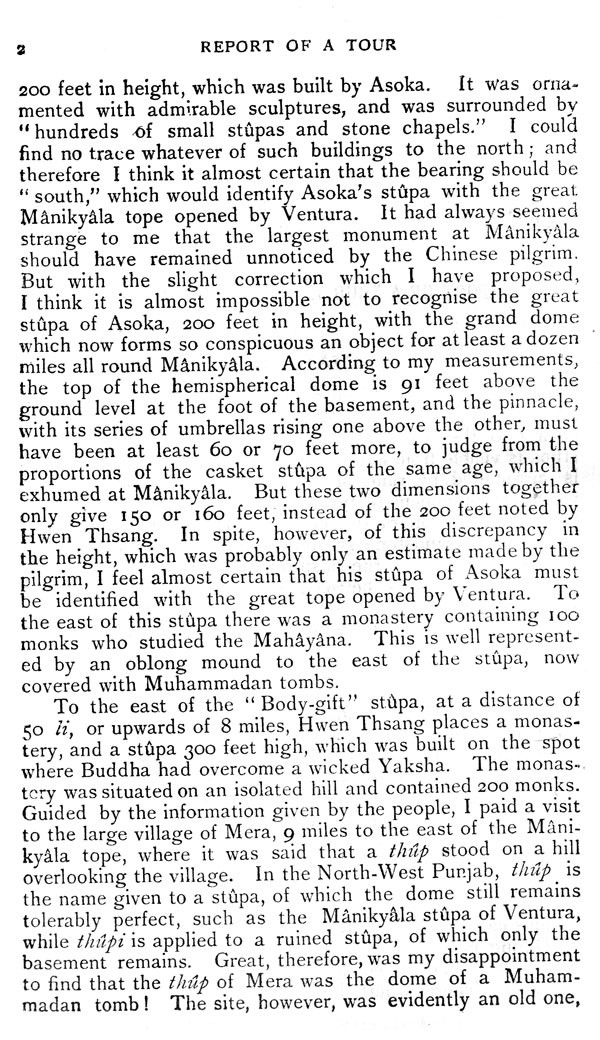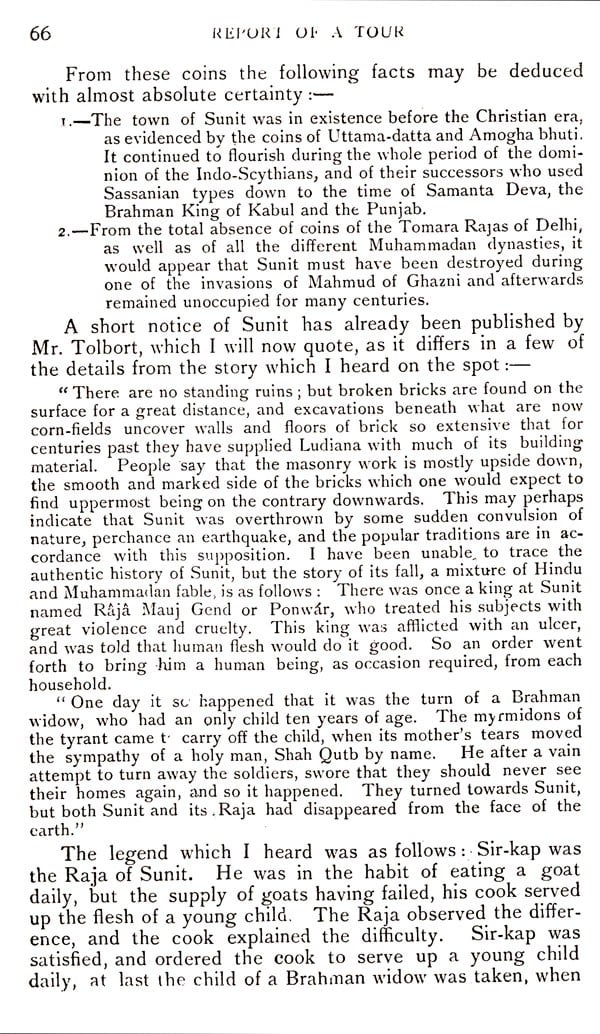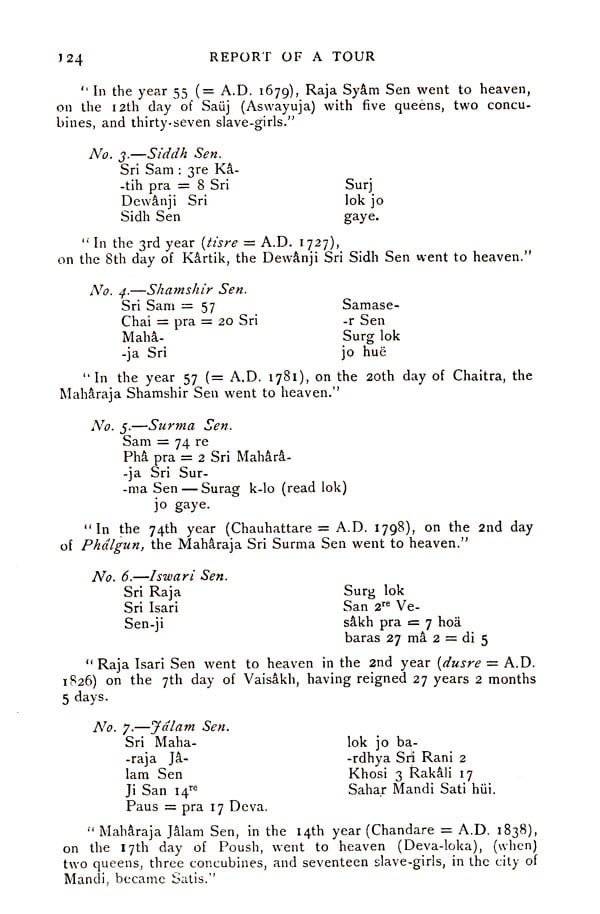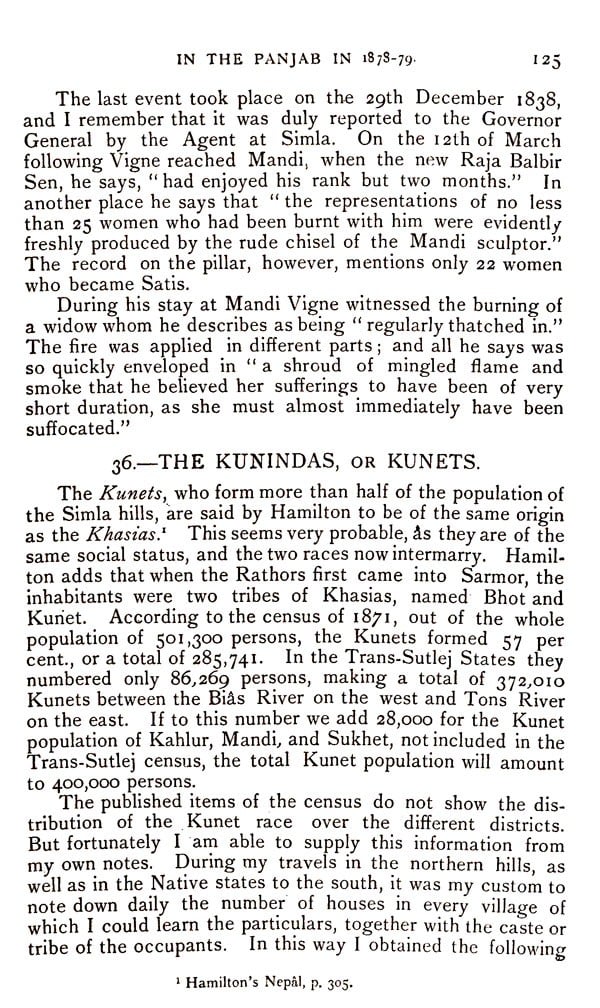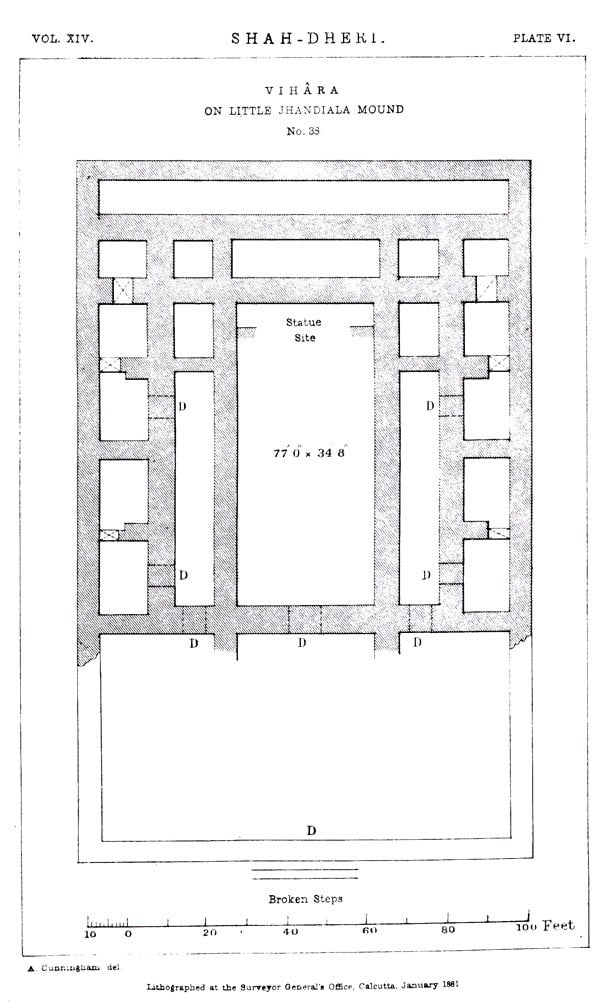
ASI Report of A Tour in The Punjab in 1878- 79
Book Specification
| Item Code: | AZB511 |
| Author: | Alexander Cunningham |
| Publisher: | Archaeological Survey of India |
| Language: | English |
| Edition: | 2000 |
| Pages: | 232 (Throughout B/W Illustrations) |
| Cover: | HARDCOVER |
| Other Details | 9.8 x 6.5 inches |
| Weight | 660 gm |
Book Description
THE object of my tour in the Panjâb in 1878-79 was to see several of the rather-out-of-the-way places, which had not been previously visited, so as to complete as far as possible a general exploration of the province. The temples at Bâghanvâla, Malot, and Ketâs were visited by Mr. Beglar, who then proceeded to Ali Masjid to excavate the various Buddhist remains which had been discovered on the occupation of the place by the British army.
I examined all the sites to the south of Mânikyâla, which had been visited by General Court, and then proceeded to Shah-dheri, the ancient Taxila, to explore some places which were supposed to have been left untouched by General Ventura. I then marched through the hills by Châsa, or Fatehjang, to Kalâbâgh on the Indus, where I examined the hill fort of Mâri, now known as Kâfir-kot. From thence I crossed the Indus and marched down to the south across the Kuram River to. Kâfir-kot of Til Raja, which still possesses some ruiredHindu temples. Then re-crossing the Indus I visited the site of Rokri, where the encroachment of the river had laid bare the remains of an old stûpa, with numerous Buddhist figures and heads in stucco. I then entered the Salt Range, and visited Amb, an old Hindu fort, which still possesses some Hindu temples.
From thence I visited the old sites of Bhera and Vijhi on the Jhelam, and of Sohdara on the Chinab, and proceeded via Sialkot and Parsarur to explore the group of old mounds on the banks of the Bâgh-Bacha River. The occurrence of this name in the Eastern Panjâb, and close to Lahore, is extremely curious, as the legend of the Seven Tiger Cubs life of the cowar killed. The wh redolent of name is curious to ot quite familiar fight of the M since the Great (the Bâgh-Bacha) is intimately connected with the stories of Raja Hudi, Raja Sir-kap, and their antagonist Rasâlu, all of which belong to the Western Panjâb, and more especially to Taxila and the banks of the Indus.
**Contents and Sample Pages**


